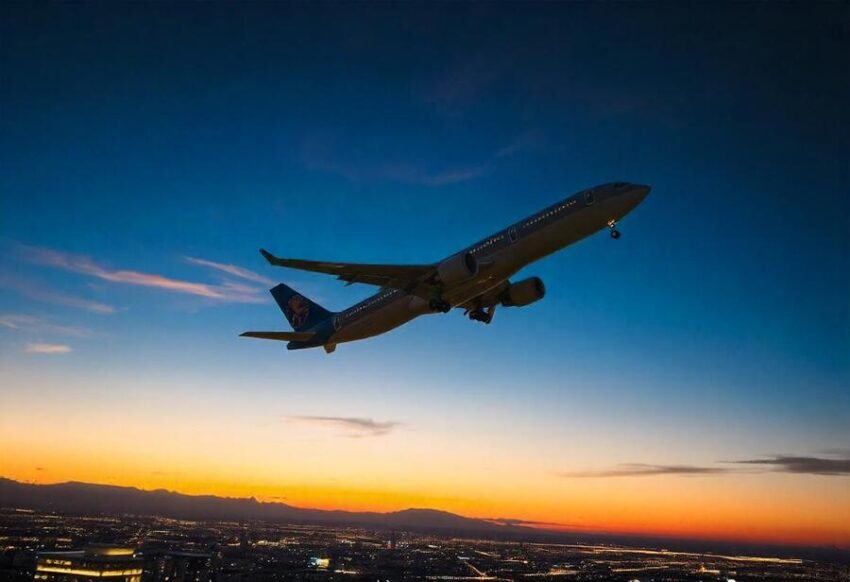
Istanbul, Mumbai, Girona, Málaga, Asheville, and other secondary cities are thriving as domestic airlines supercharge tourism, driving growth and new opportunities.
The aviation industry is undergoing a transformative shift, with airlines increasingly targeting secondary cities for domestic flight expansions. This strategic move is reshaping local tourism, bringing long-overdue attention to smaller urban hubs that often remained overshadowed by major metropolitan areas. The result? Greater accessibility, thriving local economies, and a renewed focus on sustainable tourism.
Opening the Skies to Secondary Cities
Secondary cities, once considered off the beaten path, are gaining prominence as airlines identify their untapped potential. These cities, rich in cultural heritage, natural beauty, and unique experiences, are now more accessible to travelers thanks to increased domestic routes. By moving beyond the traditional focus on primary tourist destinations, airlines are offering travelers new opportunities to explore lesser-known regions.
The addition of these routes comes as part of a broader industry trend to diversify flight networks. Airlines recognize that smaller cities represent a growing market segment, driven by increasing demand for unique, authentic travel experiences. With domestic flights becoming more affordable and frequent, exploring hidden gems has never been easier for travelers.
Boosting Local Economies Through Tourism
The ripple effects of this aviation expansion are being felt across various sectors in secondary cities. Local tourism businesses, including small hotels, boutique restaurants, and local artisan shops, are experiencing a surge in customer traffic. This increase in patronage is directly translating into economic growth and job creation, benefiting local communities.
For instance, in Turkiye, cities like Gaziantep and Konya are becoming hotspots for cultural tourism, showcasing traditional cuisine and historical landmarks. Similarly, in India, cities such as Varanasi and Coimbatore are thriving due to enhanced connectivity, attracting both domestic and international tourists.
These developments are also encouraging tourism diversification, as travelers increasingly seek experiences beyond crowded urban centers. From picturesque countryside retreats to rich cultural festivals, secondary cities offer unique attractions that cater to a wide range of interests.
Driving Infrastructure Development
The increased focus on secondary cities is driving significant infrastructural upgrades. Airports in these regions are expanding and modernizing to accommodate the growing influx of travelers. From enhanced terminal facilities to better transportation links, these improvements not only benefit tourists but also provide long-term advantages for local residents.
Local governments are also stepping up their efforts by investing in tourism-related projects. These initiatives include building eco-friendly accommodations, developing cultural heritage sites, and promoting sustainable tourism practices. Such measures ensure that secondary cities are well-prepared to handle the demands of growing tourism while preserving their unique character and natural resources.
Promoting Sustainable Tourism
One of the standout benefits of this aviation shift is its alignment with sustainable tourism goals. By dispersing tourist traffic across multiple destinations, secondary cities help reduce the strain on overburdened primary cities like Barcelona, Istanbul, or Mumbai. This not only protects the infrastructure and environment of larger cities but also fosters balanced tourism growth nationwide.
For example, secondary cities in Spain, such as Girona or Málaga, are leveraging their cultural and natural assets to draw tourists away from overcrowded hubs like Madrid. Similarly, regional airports in the United States, such as those in Asheville, North Carolina, and Boise, Idaho, are now gateways to adventure, offering alternatives to traditional tourist-heavy destinations.
Cultural Exchange and Tourism Diversification
With more travelers venturing into secondary cities, there’s a surge in cultural exchange and tourism diversification. Visitors are increasingly drawn to authentic, immersive experiences, such as exploring ancient ruins, participating in local festivals, or indulging in regional culinary traditions. This interest in cultural tourism promotes a deeper understanding of the destinations and creates meaningful interactions between tourists and local communities.
In places like Turkiye’s Cappadocia or India’s Udaipur, tourism offers an opportunity to showcase local traditions while providing economic support to artisans and entrepreneurs. These destinations are also encouraging eco-tourism initiatives, such as guided nature tours and sustainable lodging options, to appeal to environmentally conscious travelers.
Challenges and Opportunities
While the expansion of aviation to secondary cities presents numerous benefits, it also comes with challenges. Infrastructure development must keep pace with the surge in tourism to prevent overcrowding and environmental degradation. Furthermore, local communities need to be actively involved in shaping the growth of tourism to ensure it aligns with their needs and cultural values.
On the other hand, the opportunities far outweigh the challenges. Airlines and governments are recognizing the importance of sustainable practices, ensuring that tourism development benefits both visitors and residents. By working collaboratively, stakeholders can create thriving tourist hubs that maintain their authenticity and appeal for years to come.
Transforming the Travel Landscape
The rise of secondary cities in the travel landscape signifies a major shift in the way people explore the world. This trend reflects the growing demand for meaningful, off-the-beaten-path experiences that connect travelers with the heart of a destination. As airlines continue to expand their networks, the accessibility of these cities will only improve, further solidifying their place on the global tourism map.
For travelers, this means more choices, greater affordability, and the chance to discover hidden treasures. For local communities, it represents an opportunity to share their unique culture and heritage while reaping the economic rewards of tourism. And for the aviation industry, it marks a strategic move toward meeting the evolving needs of modern travelers.
The post Istanbul, Mumbai, Girona, Málaga, Asheville, And Other Secondary Cities Thriving As Domestic Airlines Supercharge Tourism Growth appeared first on Travel And Tour World.

